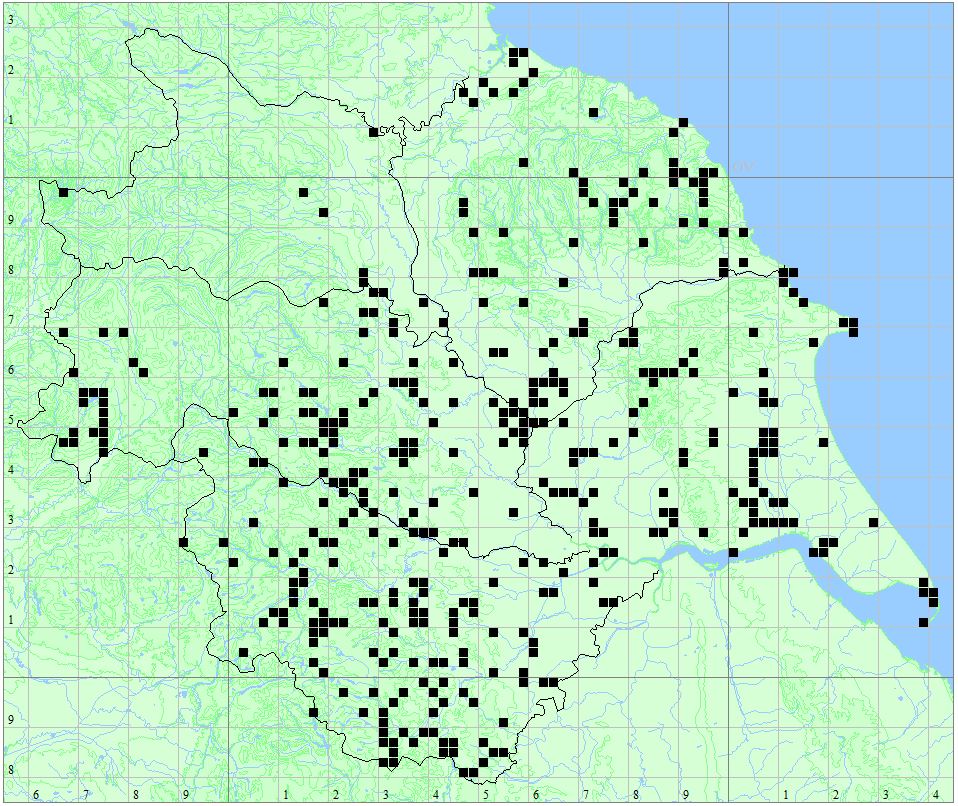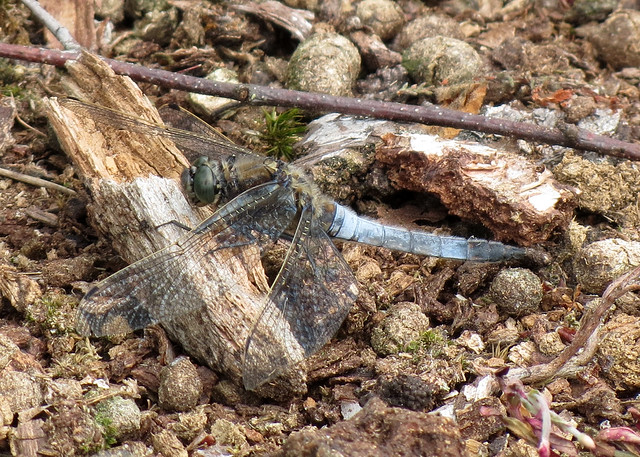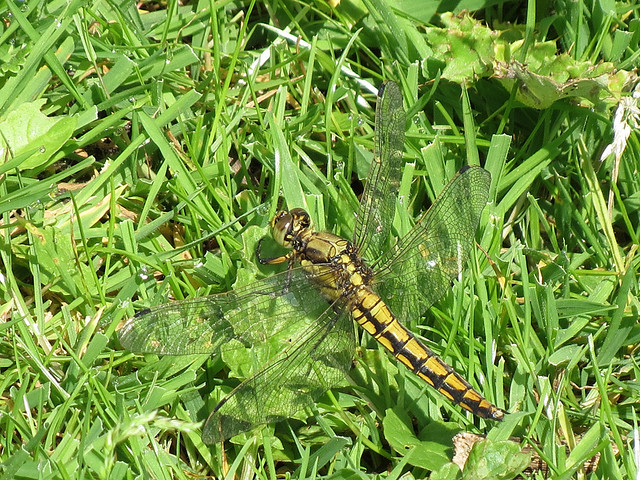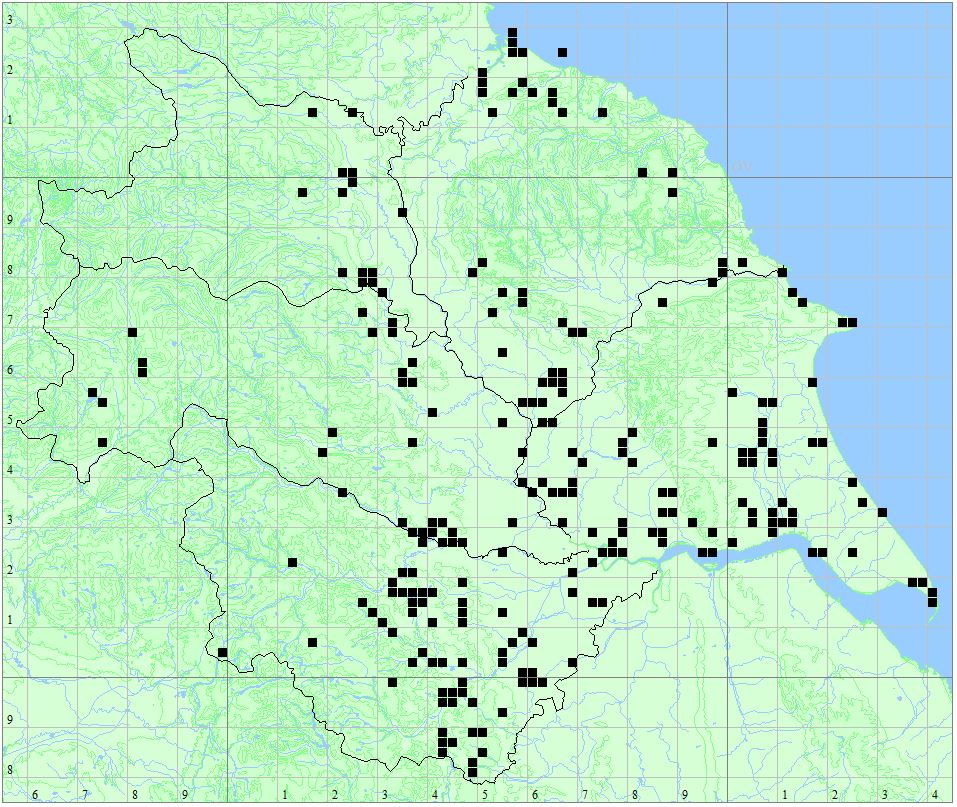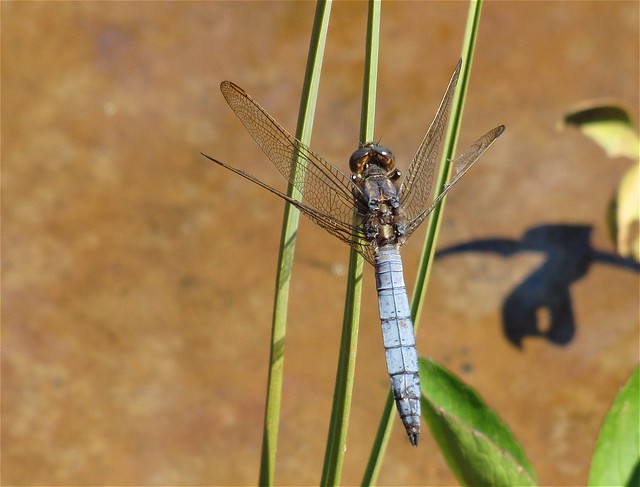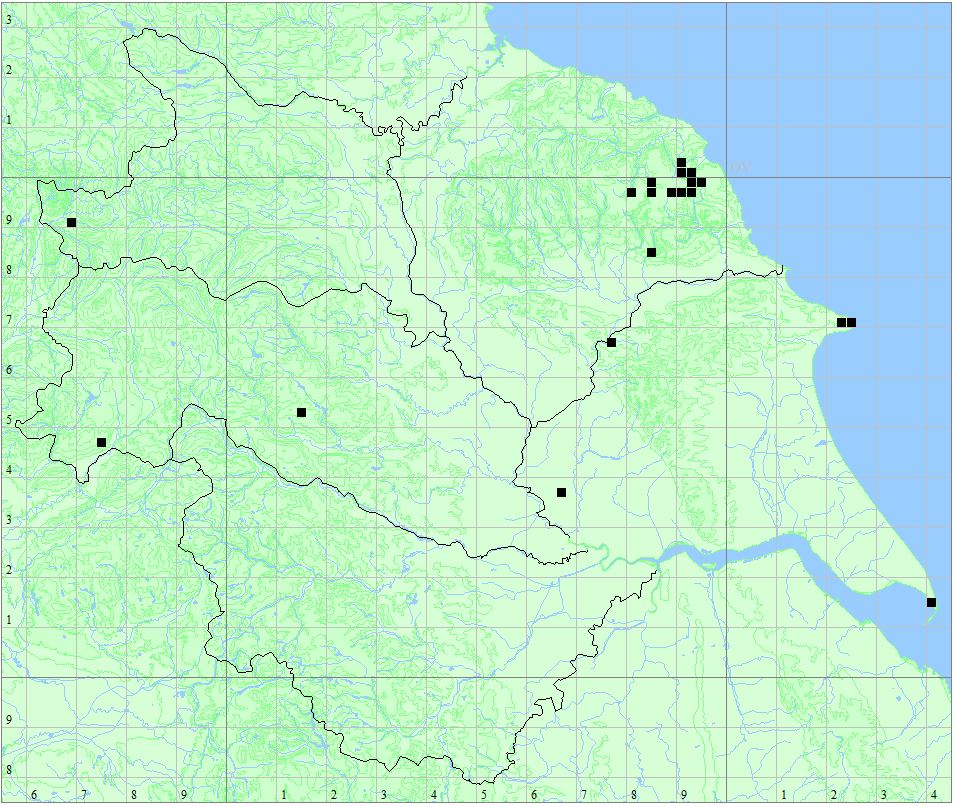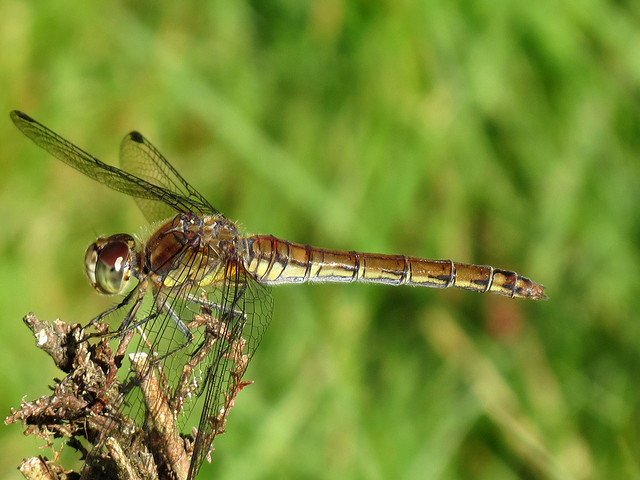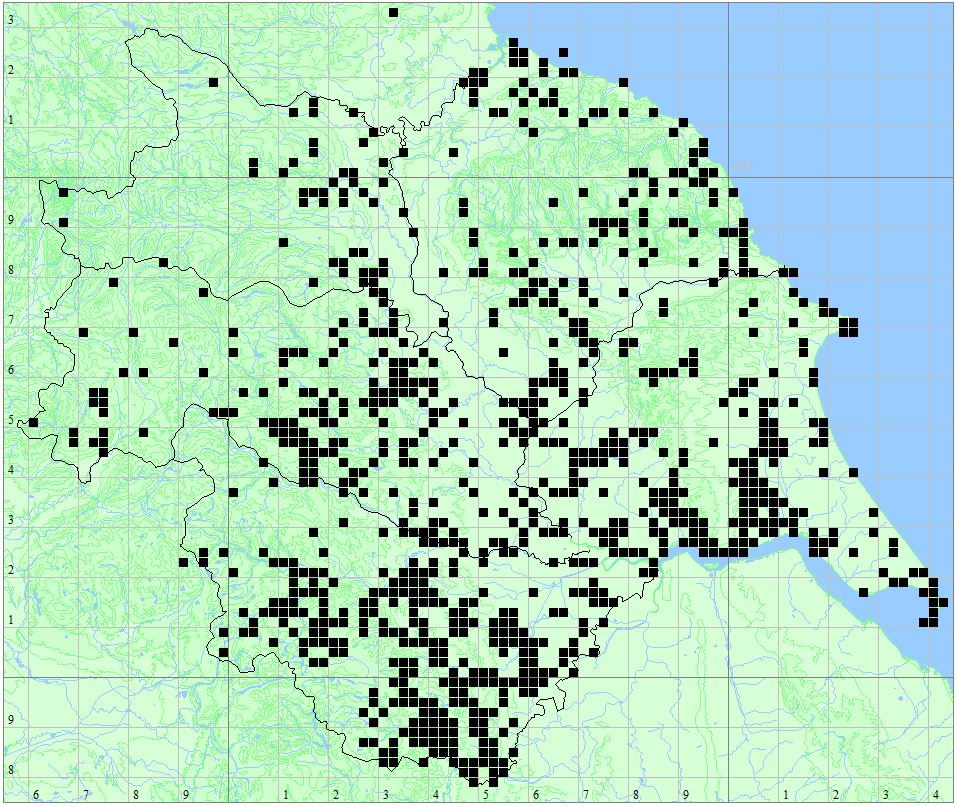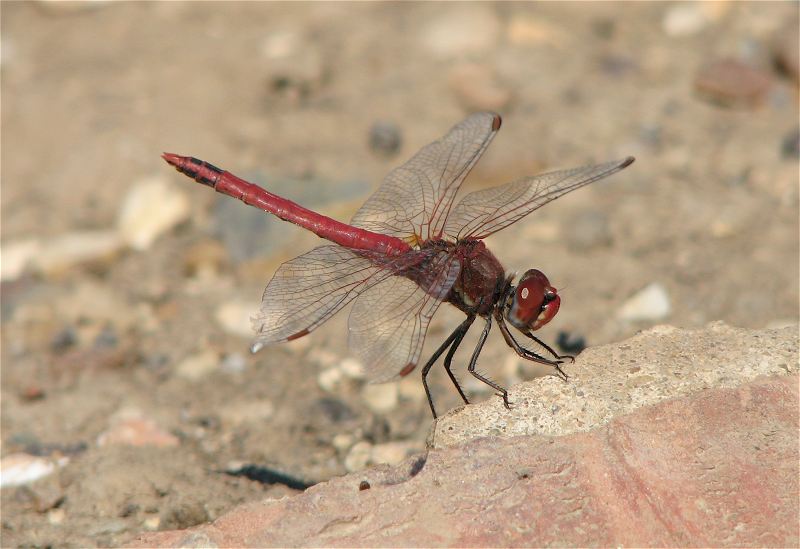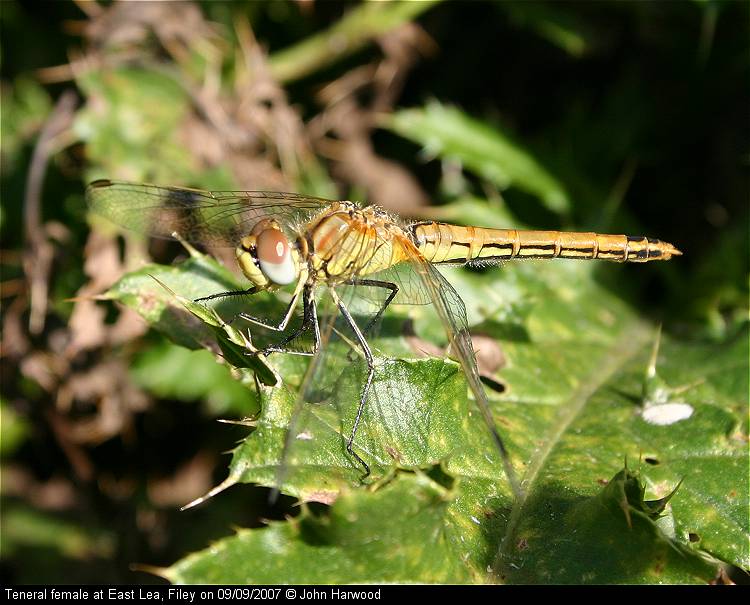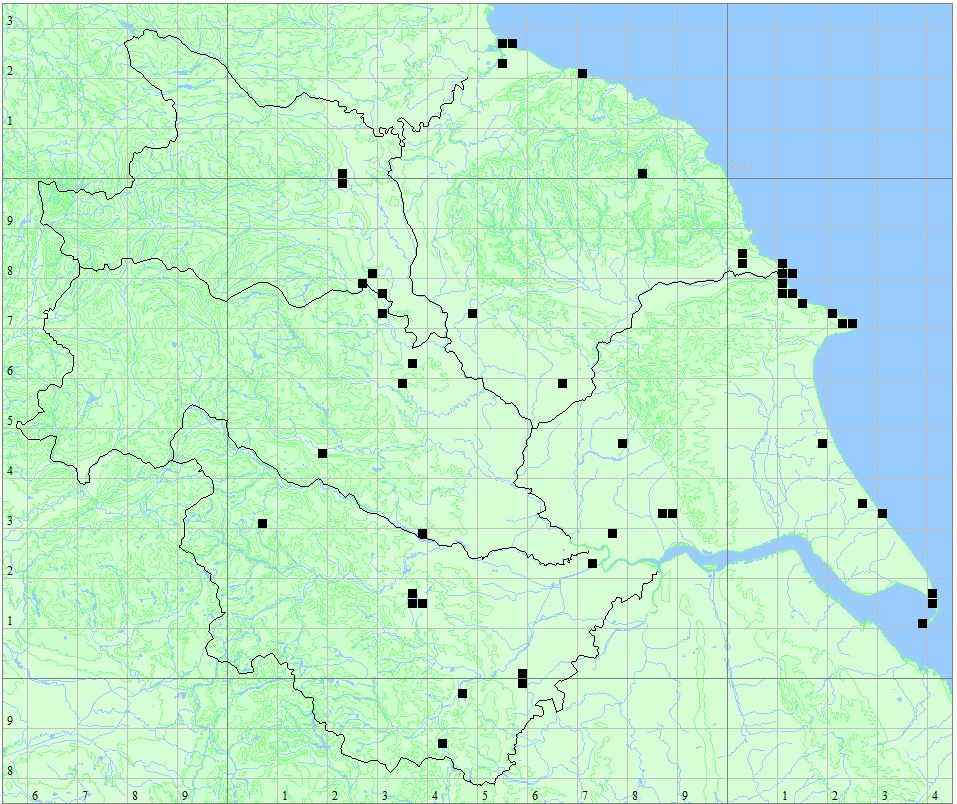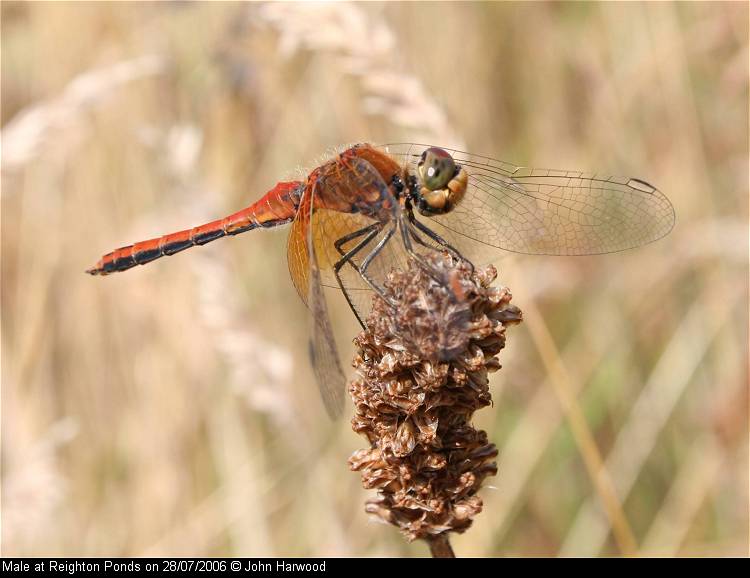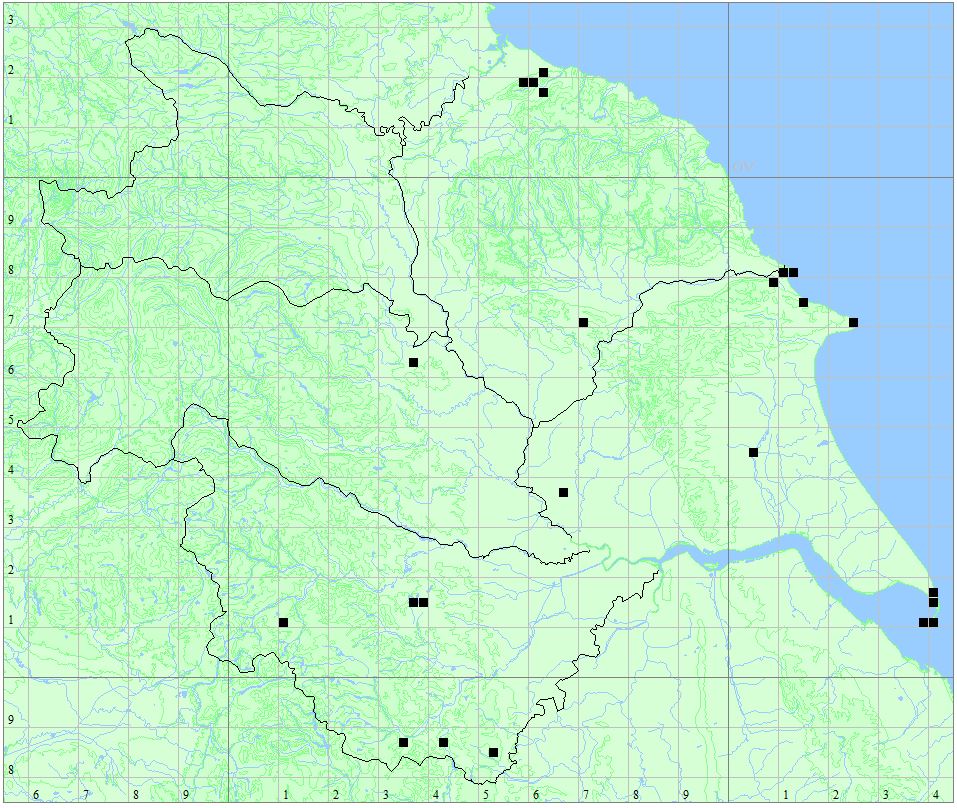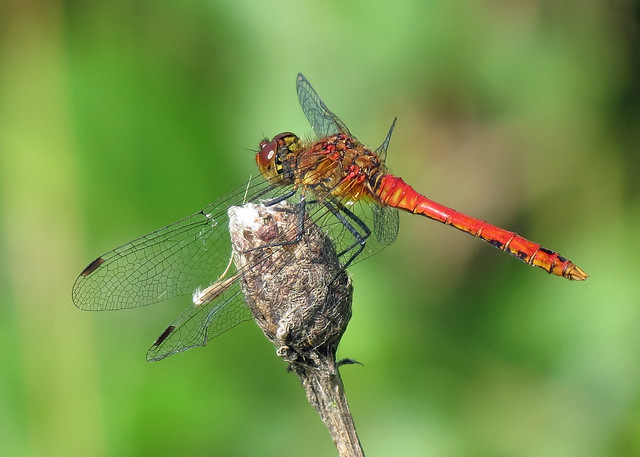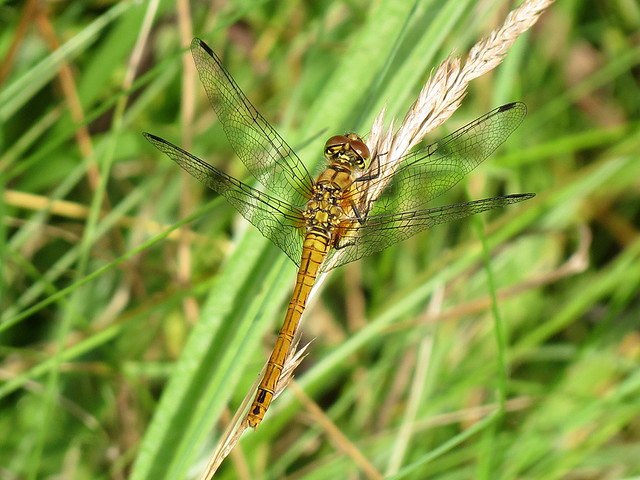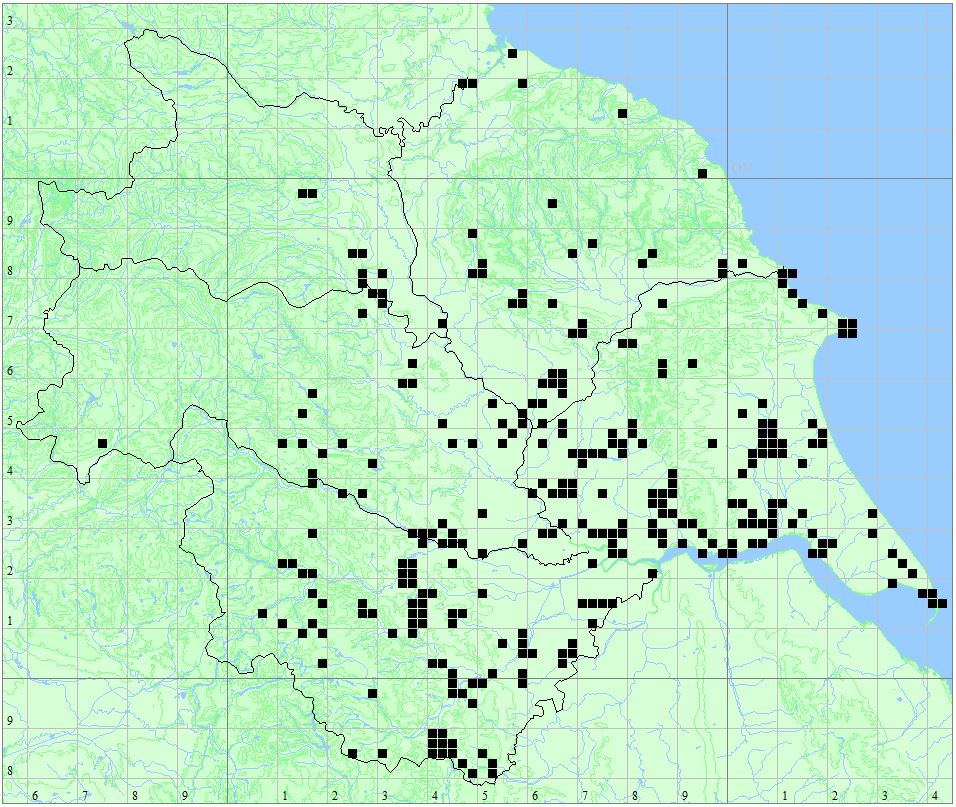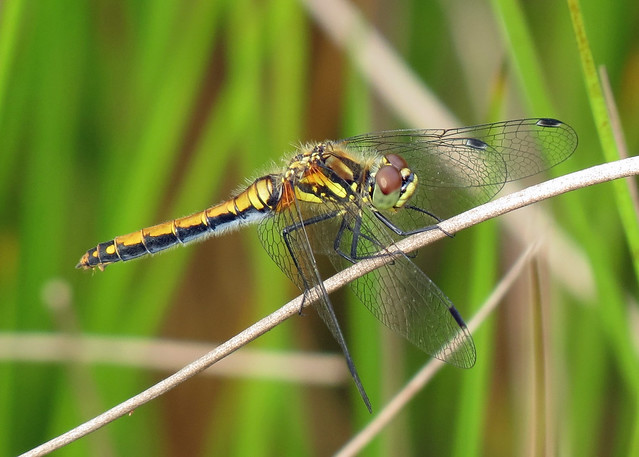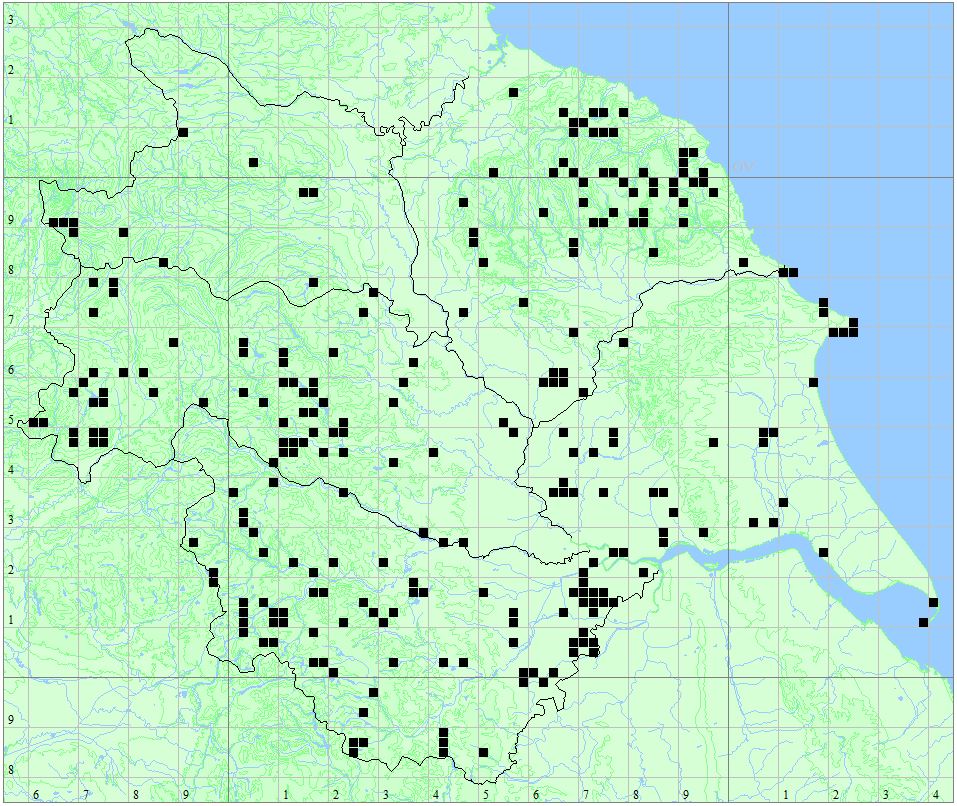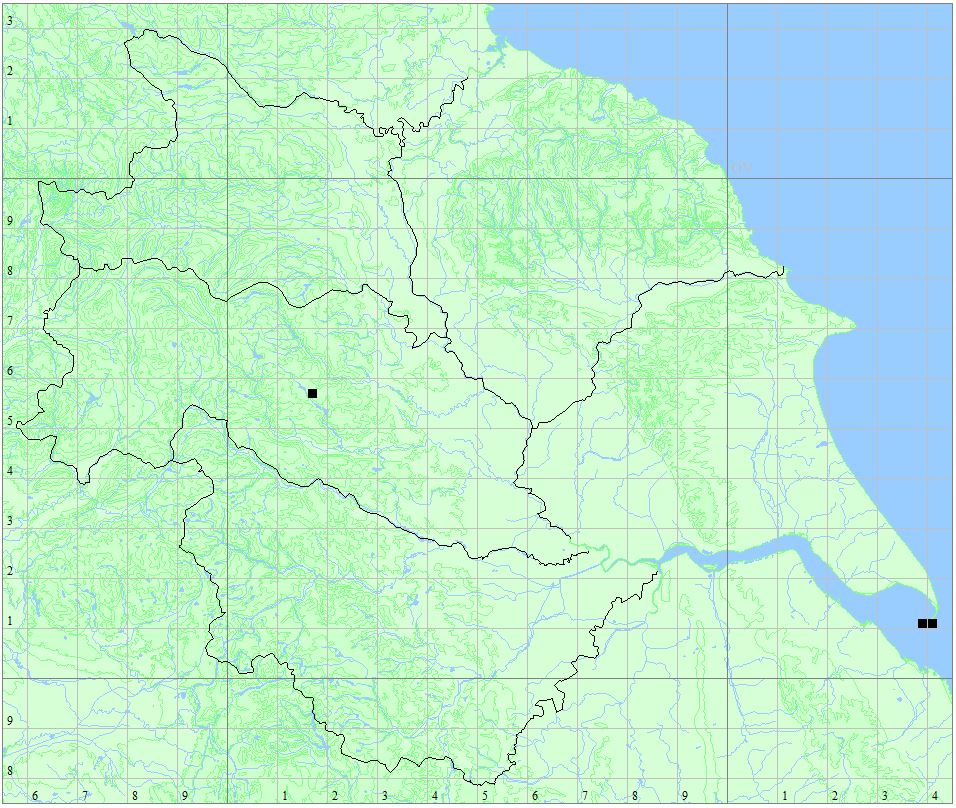<-Previous Species – Next Species->
Length
44mm, Wings 76mm
Males
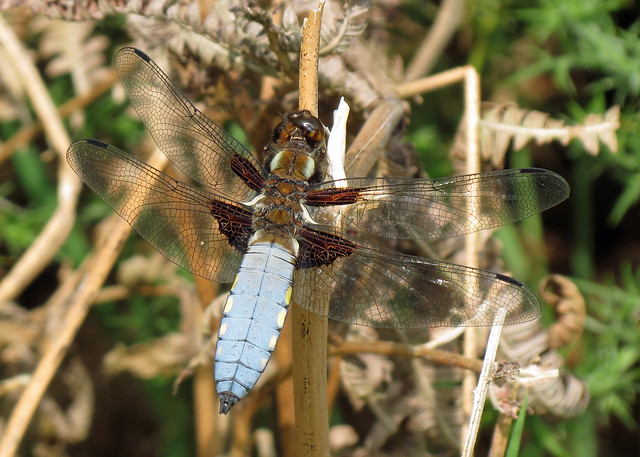
Thorax brown, pale, broad antehumeral stripes; brown patches at base of wings; broad abdomen blue with yellow spots at sides, legs brown, eyes brown.
Females

Thorax brown, pale, broad antehumeral stripes; abdomen yellowish brown with yellow spots along sides; wings brown base areas.
Immatures
Both sexes yellowish.
Habitat
Small lakes, ponds, garden ponds, ditches and canals with well-vegetated margins and sheltered sunny locations. Will use bog pools if they are not too acidic. Often, one of the first species to colonise new water bodies.
Behavior
Males are aggressively territorial, there seldom being more than one male at any small pond. They perch on stems of tall emergent vegetation, or on the ground, chasing off any intruding males that appear within their territory. Copulation takes place in flight, lasting for only a few seconds. The female oviposits by flicking the tip of her abdomen into the water rapidly, occasionally with the male guarding her nearby. Larvae live amongst the bottom debris, emerging after two to three years. Emergence at sites is usually synchronous on marginal and emergent vegetation.
Status
Widespread though scarce in VC65 Noert-east Yorkshire.
